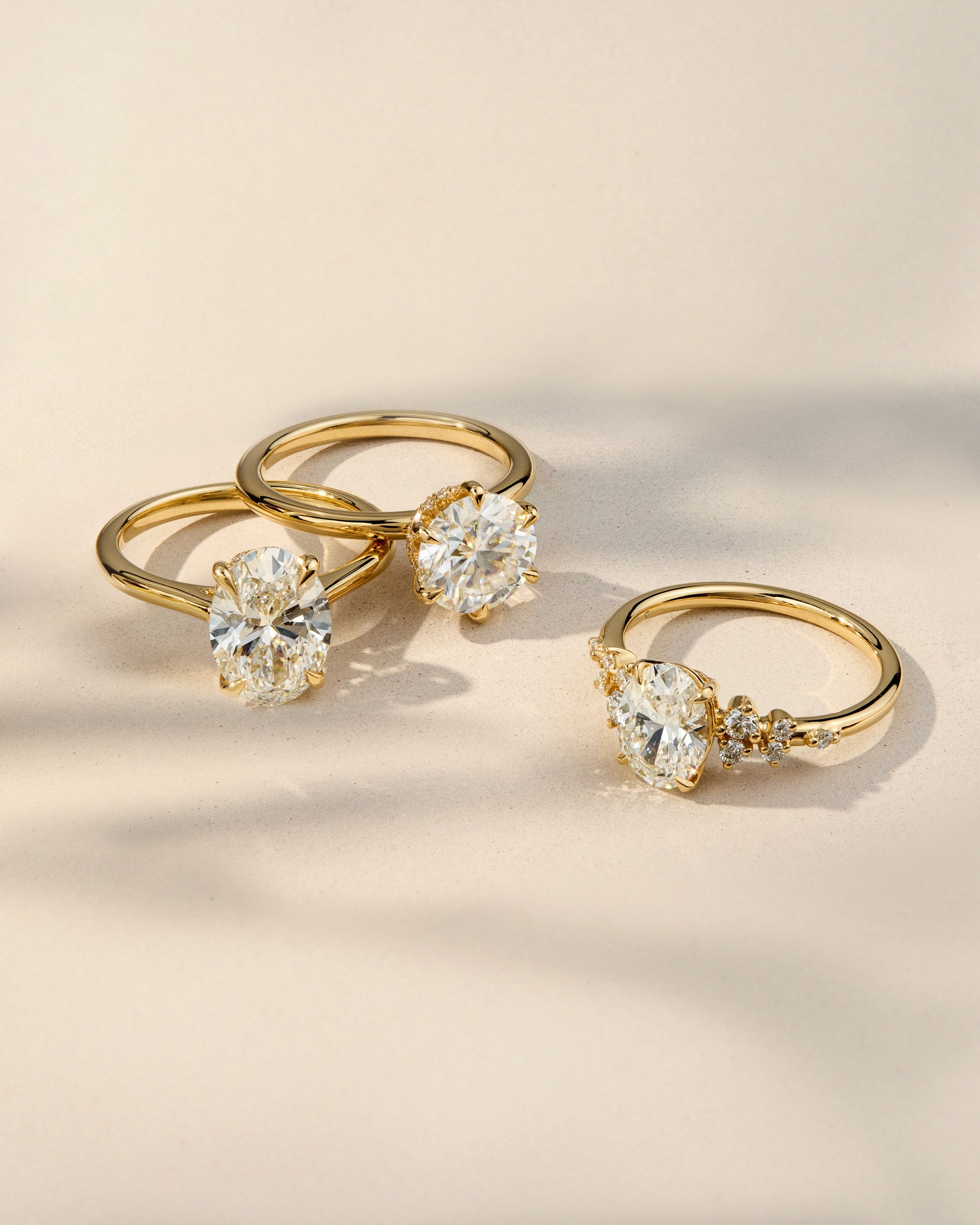
All About Classic and Popular Ring Setting Styles
If you’re starting from scratch, having never entered a jewellery store or spoken to a jeweller, buying an engagement ring is a daunting process – but we’re on a mission to decode engagement rings. If you’ve already settled on a lab-grown engagement ring but don’t know exactly what stone cut or ring setting to choose, we’ve got you covered.
What setting is best for an engagement ring?
This comes down to whatever the ring's receiver likes, but some settings are more popular than others.
Solitaire setting : a solitaire engagement ring features a single gemstone sitting on the metal band. In some cases the band might be thicker, or it can be thin to exaggerate the size of the centre stone.
Halo setting: a halo ring is a setting style where a ‘halo’ of gemstones surround the entire centre stone. While halo engagement rings enhance the beauty of the centre stone, it also helps in creating a bigger look, perfect for those working with a modest budget. While any cut of centre stone would suit our range of halo engagement rings, the oval, cushion and round cuts are classic choices.


Trilogy setting: trilogy engagement rings feature a row of three stones rather than one singular centre stone. While generally this is just a unique design choice, some couples like to give it a meaning; like the past, present and future of their relationship. A trilogy ring also allows for more versatility in stone choice, such as a mix of lab-grown diamonds and lab-grown sapphires.
Toi et moi setting: this is one of the recently popularised settings, featuring two stones sitting side by side. It’s no surprise the toi et moi engagement ring setting is a popular choice for couples. Toi et moi means ‘you and me’ in French, as is a wonderfully romantic gesture, and also gives you the same gemstone versatility as the trilogy set rings.
What setting shows off a diamond the best?
This is certainly subjective, but a solitaire engagement ring setting has long been a favourite of engaged couples over decades.

While it is subtle and understated, solitaire rings put the centre stone as the star of the show. This setting is wonderful if you’re looking for a unique engagement ring cut, such as a heart or marquise-shaped diamond.
As we’ve mentioned, engagement rings are subjective, and what others might deem as the ‘best’ setting can differ. Another classic setting which beautifully shows off the centre stone is the Tiffany setting (for some visualisation, look at the engagement ring emoji engagement 💍). This six-prong setting lifts the diamond above the metal band, allowing the light to dance in it uninterrupted (prongs are little metal clips that surround the stone and hold it in place). For a lab grown alternative, our round brilliant-cut engagement rings do the job.
What is the difference between prong and solitaire setting?
To simplify things, a solitaire setting is a blanket statement for all settings which features a centre stone, and a prong setting is a type of solitaire setting. Others include a bezel set stone (where your chosen metal completely envelopes all sizes of your centre stone) and the halo setting we previously spoke about.



The prong settings can be four-pronged or six-pronged, where the metal clips are spaced evenly around the centre stone to hold the stone in place. While you might think this would take away from the stone, the clips are minuscule in size and are necessary for ensuring you can safely wear your ring as often as you’d like. They are also placed purposely so as not to interrupt the light from entering your stone – meaning maximum sparkle.
Choose an Engagement Ring Setting